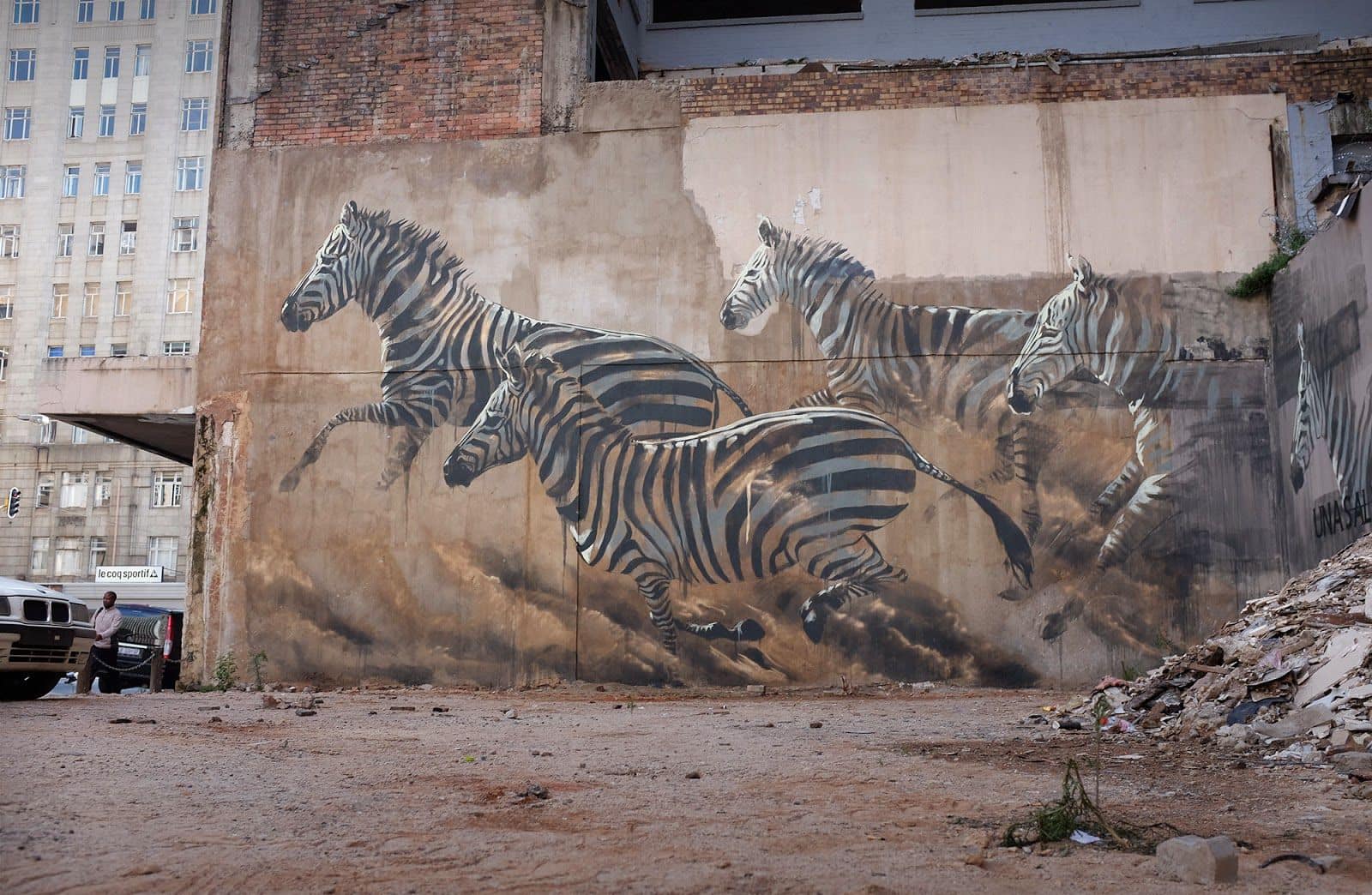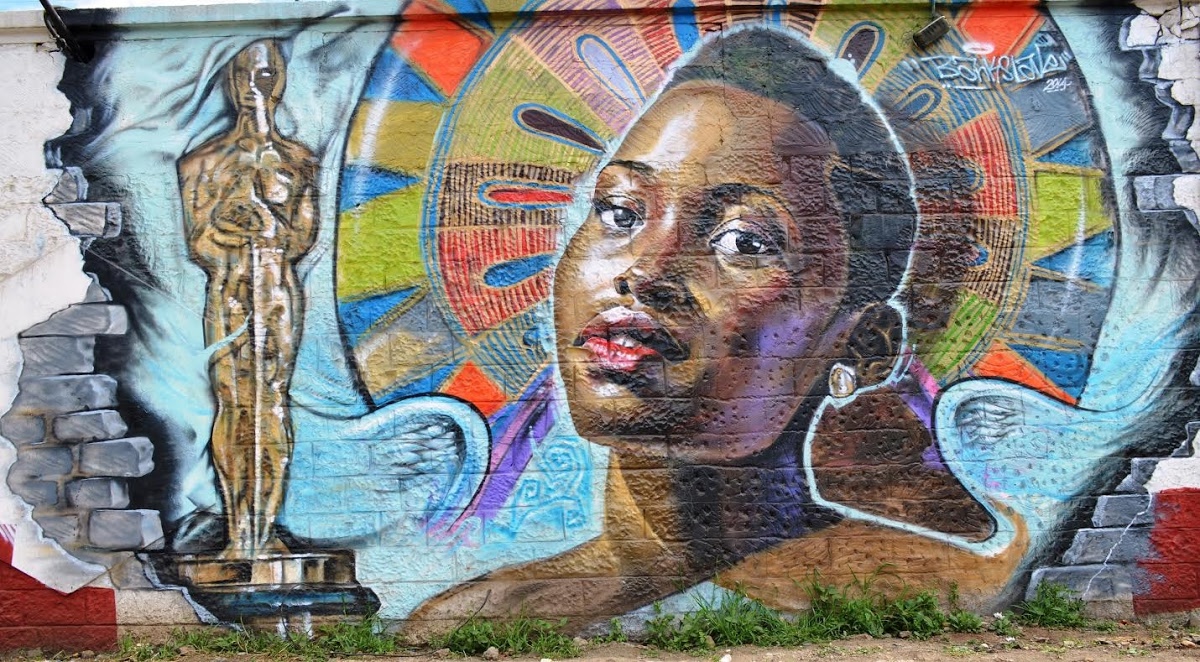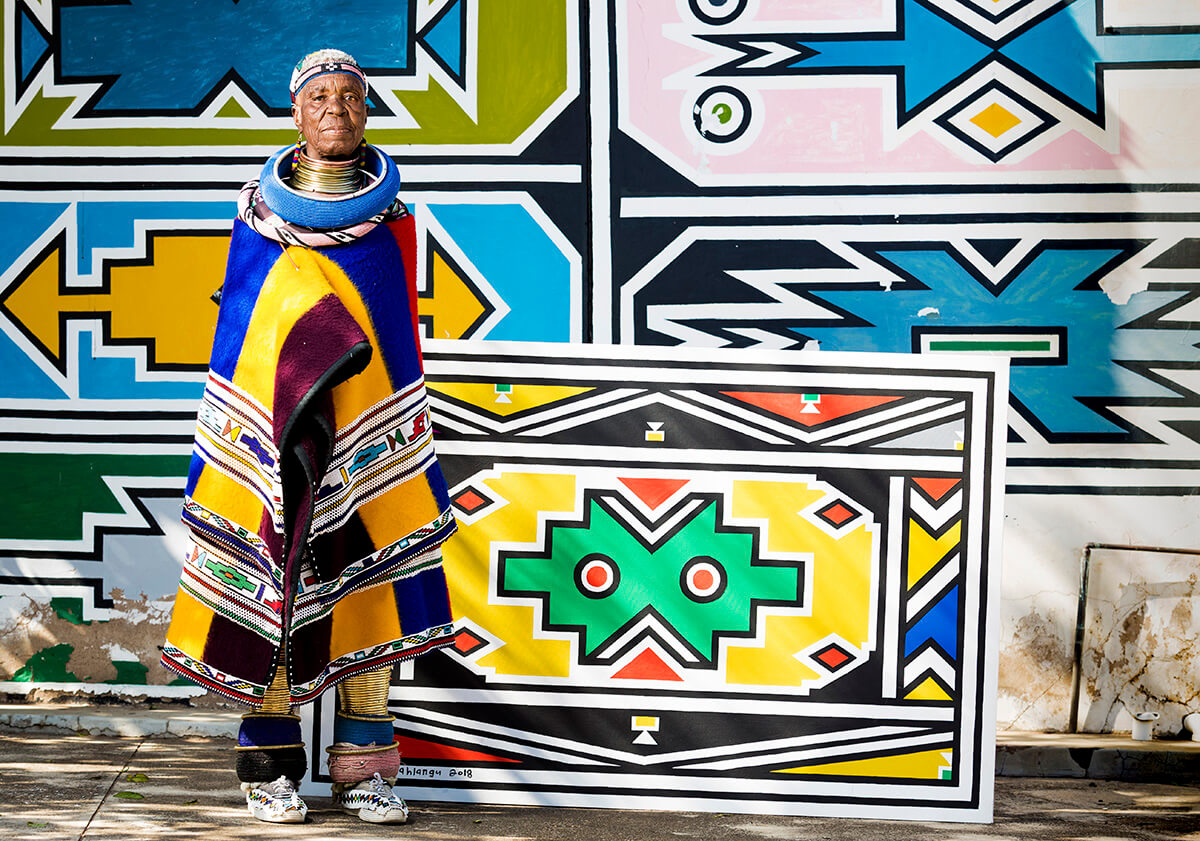African street art is a powerful and diverse form of creative expression that has rapidly gained recognition and prominence over the last few decades. From the vibrant murals in South Africa to the intricate stencils in Tunisia, it has played a significant role in transforming urban landscapes and empowering local communities across the continent. This essay aims to explore the impact of African street art on urban landscapes and communities, delving into its historical background, the role it plays in urban transformation, and how it empowers communities.
In recent years, there has been a growing interest in African street art as a means of social, political, and economic change. As a result, numerous talented artists have emerged, each with their own unique style and message. Some of these prominent artists include Banksy Grannies from South Africa, El Seed from Tunisia, Chazme from Zimbabwe, Yazan Halwani from Lebanon, and Faith47 from South Africa, among others. Their work not only adorns the walls of cities and towns across Africa but also sparks conversations and encourages change.

Historical Background of African Street Art
Origins and Influences
African street art has its roots in various traditional and contemporary art forms, including ancient rock paintings, murals, graffiti, and global pop culture. The diverse styles and techniques employed by African street artists reflect this rich cultural heritage and the influence of both local and international artistic movements.
Evolution and Development of Styles
Over time, African street art has evolved from simple graffiti tags to complex and thought-provoking murals and installations. With the rise of the internet and social media, artists have been exposed to a wide array of styles and techniques from around the world, which has helped shape the development of a unique African street art aesthetic.
Key Artists and Movements
Numerous artists and movements have played a pivotal role in shaping the landscape of African street art. Some of these influential figures include Esther Mahlangu, a South African artist known for her bold geometric patterns inspired by Ndebele culture, and Mohamed Abouelnaga, an Egyptian artist who uses street art to raise awareness about social issues.

Role of Street Art in Urban Transformation
Beautification and Revitalization of Public Spaces
Street art has played a crucial role in the beautification and revitalization of urban landscapes across Africa. Large-scale murals and public installations have transformed drab walls and neglected spaces into vibrant works of art, fostering a sense of pride and belonging among local residents.
Social and Political Commentary
Street art has also been used as a platform for social and political commentary, addressing pressing issues such as poverty, inequality, and corruption. Through powerful visuals and thought-provoking messages, artists like Graffiti Grannies and Rasty Knayles have been able to engage the public in important conversations, encouraging civic dialogue and social change.
Economic Benefits
The growing popularity of African street art has also had economic benefits, attracting tourists and fostering local businesses in the process. Cities like Cape Town, Johannesburg, and Lagos have become hubs for street art tourism, providing employment opportunities for local artists and guides. Additionally, street art festivals such as Chale Wote in Ghana and Jidar in Morocco have played a key role in promoting local art scenes and boosting the economy.
Empowerment of Communities through Street Art
Representation and Visibility
African street art has provided a platform for underrepresented voices and perspectives, allowing artists to tell local stories and preserve cultural heritage. For instance, Kenyan street artist Wise Two has been instrumental in promoting East African culture through his work, while South African artist Falko One has used his murals to depict the everyday lives of people in his community.
Community Engagement and Collaboration
Street art has also served as a tool for community engagement and collaboration. Numerous art initiatives and workshops, such as Dakar’s Festigraff and Uganda’s Bayimba International Festival, have been established to bring local residents together and provide them with opportunities to participate in public art projects.
Psychological Impact and Well-being
The presence of street art in urban environments has been linked to an enhanced sense of belonging, pride, and mental well-being. By beautifying public spaces and promoting social cohesion, street art fosters a positive atmosphere that can improve the overall quality of life for local residents.
Challenges and Criticisms
Gentrification and Displacement
While street art has numerous positive effects, it can also contribute to gentrification and displacement. As neighborhoods become more attractive due to the presence of street art, property values may rise, pushing out long-term residents who can no longer afford to live there.
Commercialization and Loss of Authenticity
The growing popularity of African street art has also led to concerns about commercialization and the potential loss of authenticity. As street art becomes more mainstream, some worry that artists may be pressured to create work that caters to the tastes of tourists and collectors, rather than staying true to their own creative vision.
Legal Issues and Vandalism Concerns
Finally, street art remains a contentious issue in some areas due to concerns about vandalism and property damage. While many cities have embraced street art as a legitimate form of expression, others continue to enforce strict laws and penalties against artists who create work without permission.

In conclusion, African street art has had a profound impact on urban landscapes and communities across the continent. Through its ability to transform public spaces, engage in social and political commentary, and empower communities, it has become an important catalyst for change. However, it is crucial to address the challenges and criticisms associated with street art in order to ensure that it remains a sustainable and positive force in African cities.
By supporting and promoting African street art, we can help foster a vibrant, inclusive, and thriving urban environment that benefits all members of society.
FAQ
Who is the street artist in Kenya? There are several notable street artists in Kenya, including Wise Two, Bankslave, and Swift9.
What is the most famous piece of street art? It is difficult to pinpoint a single most famous piece of street art, as there are many iconic works worldwide. However, some of the most well-known pieces include Banksy’s “Balloon Girl,” Keith Haring’s “Crack is Wack,” and Os Gêmeos’ “Giants” mural in São Paulo.
Who is the most famous graffiti artist in South Africa? Faith47 is one of the most famous graffiti artists in South Africa. Her large-scale murals can be found in cities across the country and around the world.
Which country is famous for street art? Many countries are famous for their street art, including Brazil, the United States, the United Kingdom, and Germany. In Africa, South Africa, Kenya, and Tunisia are particularly known for their vibrant and diverse street art scenes.





 No products in the basket.
No products in the basket.